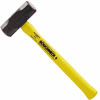|
|
||||||
|
Breaking
Down The Walls There's a barrier outside your business. It's keeping people from buying from you. Here's your marketing sledgehammer. Let's talk about why so many potential customers DON'T buy from you. Understanding this is crucial, yet very few businesspeople will ever learn the real reason. Too bad, because making money is really pretty simple. You only need three things to make all you want. They are: 1. A great product or outstanding service. 2. A marketplace of people with the desire and money to buy what you have to offer. 3. A way of bringing #1 and #2 together! That's too simple you say? You were expecting some incredible marketing insight and I give you a flip 1-2-3 answer like that?!!? Obviously, the devil is in the details… but just understanding this vital "money principle" will make your business much more profitable than it is right now. Before we start bringing #1 and #2 together (which is what marketing is after all), let's touch briefly on Thing #1. Your product or service or whatever it is that you do, has to be good. Actually, it should be *great* but we can work with good. You've heard the old cliché about the super-salesman who could "sell an ice-maker to an Eskimo." Well, no amount of marketing is going to make you successful if you have a crappy "product." Actually what'll happen is this: you'll just speed up the process by which your community finds out you're no good! So… I'm hoping your house is in good order. If not, you've got bigger problems than I can help you solve in this short article. Now, on to Thing #2, a marketplace of people with the money and desire to buy your stuff. Marketing legend Gary Halbert once said something insightful that I'll share with you. He was involved in a discussion about different "advantages" in business. He gave the example of opening a new fast food restaurant and asked the other people what single advantage they'd want to have for that business. One person said, "The best tasting food." Another said, "A great location." A third said, "The lowest prices in town." Gary said, "You give me this one advantage and I'll beat the pants off all of you." His advantage? A STARVING CROWD! While it's unlikely that anyone's actually "starving" for what you sell, but we can definitely learn from this. You must understand that no matter how great your business is, and no matter how much money you spend on promotions and advertising, if you're not reaching a high potential marketplace, your sales and income will be limited at best. In future articles, I'll cover strategies for targeting the high potential market segments within your community (and I use that term loosely – depending on your business situation, it may have nothing to do with your geographic community). For now, I'll concentrate on bringing the marketplace and your business together. To do that, we need to first think about what's keeping you apart. Imagine a huge masonry wall outside, separating your store or office from all the people who might buy from you (your marketplace). On one side is your business, and on the other are thousands, even tens of thousands of people. Those people can be divided into 7 categories:
In order to make a sale, you're going to have to get them through that wall. In this (simplistic) illustration, the fictional wall is made out of masonry. However, there IS a real barrier – and it will keep people out as effectively as a twenty-foot-high stone battlement. This actual wall can take many forms. Most often it's built out of distrust. By and large, PEOPLE DO NOT TRUST YOU. This is painful, I know. Many businesspeople and professionals don't want to acknowledge it. How could others be predisposed to not like or trust you? The sooner you come to realize the pervasiveness of this attitude, the sooner you'll be able to overcome it. People don't buy from people they don't trust. Fortunately, the flip side of this states that people DO buy from the people they trust. Until and unless you establish this trust bond, you won't sell much of anything. Like Gary Halbert's starving crowd, your ultimate advantage will be the ability to transform yourself from just another vendor or service provider into a trusted XYZ advisor (where XYZ is your niche). That's the singular advantage you want to have: to be known throughout your community as "THE TRUSTED ADVISOR." No other positioning is one-tenth as powerful. But lack of trust is not the only barrier. There are many others, and they vary from person to person. Let's take a look at the different categories of people "outside." 1. People who don't know you even exist.
2. People who've heard of you but never considered buying
from you. 3. People who've been thinking about maybe buying from you
someday. 4. People who have an immediate desire to buy what you're
selling, and may contact you. 5. People who have purchased one thing from you and haven't
been back since. 6. People who have bought from you several times and are
likely to buy again. 7. People who like you so much, they refer all their
friends and acquaintances to you. Now you know how to intelligently categorize your marketplace. Develop an action plan to break down the walls, cultivate stronger customer relationships, and create new champions. As soon as you do, you'll be ringing-up bigger sales and higher profits.
|



